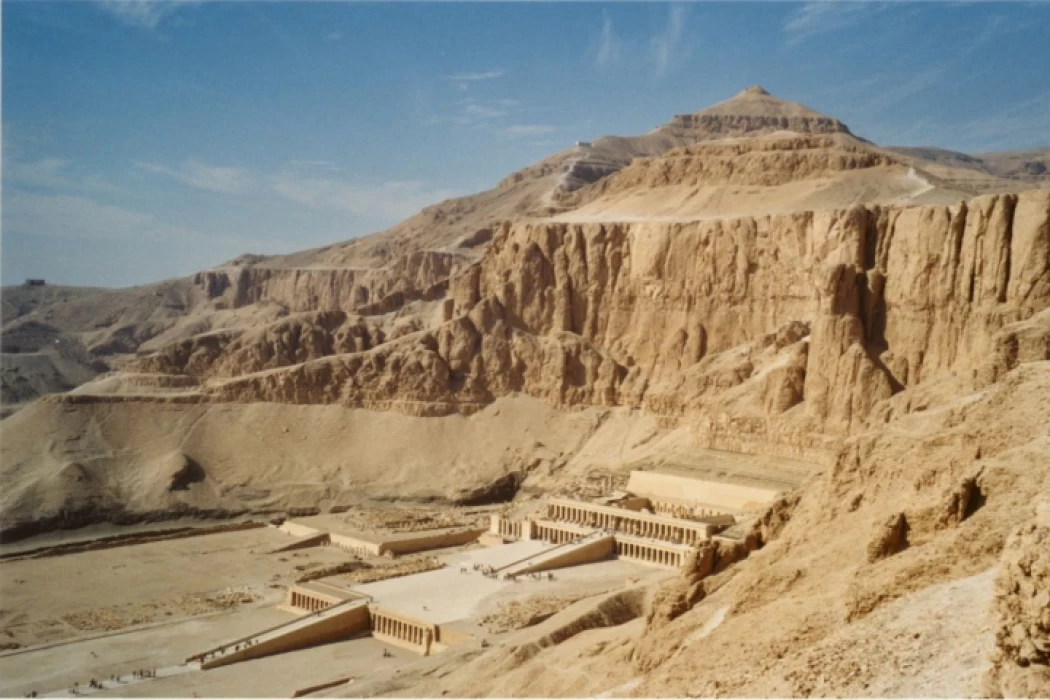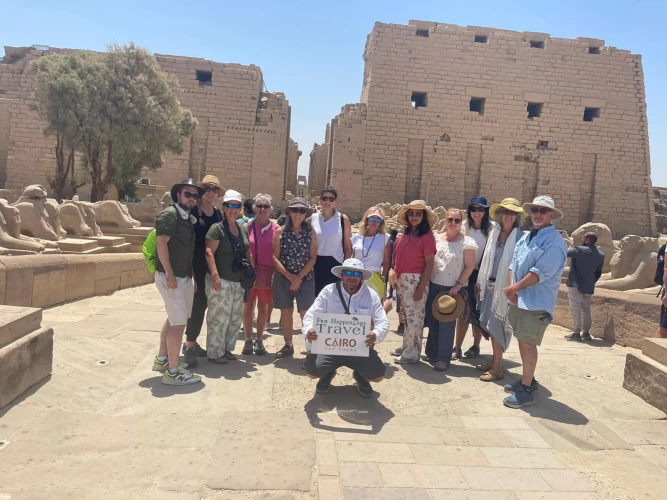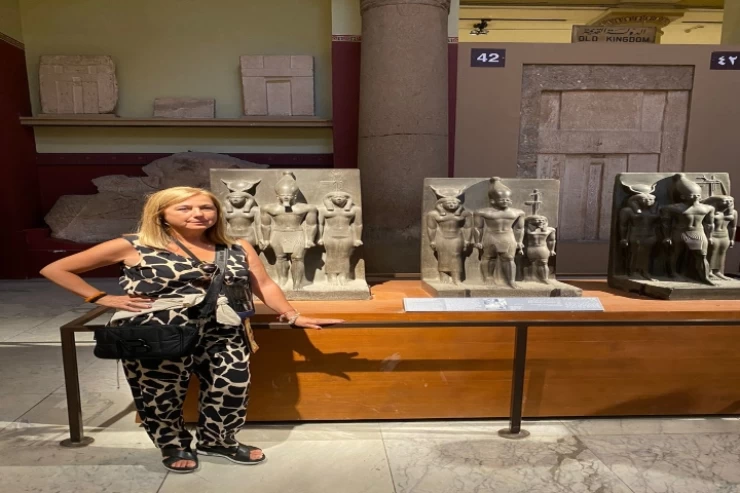
Deir el-Bahari cache
The Mysterious Riches of Egypt: The Deir el-Bahari Cache
DB320, or the Cache of Deir el-Bahari, is one of the most significant archaeological discoveries in Egypt that deserves deeper consideration. It was crammed in and set against high cliffs in the Theban Necropolis, adjacent to the well-known temple of Hatshepsut. The hidden chamber, however, contained archaeological ideas that revolutionized the very discipline of Egyptology.
An Unfathomable Find
In 1881, this area witnessed the local pillaging of graves, where the culprits exposed a huge excavation potential. However, it was a decade later when authorities realized the need for intervention, and the extent of the problem was fully understood. This rock-hewn chamber contained the remains of more than fifty individuals, including some of the most well-known kings and ladies of ancient Egypt, who had been hidden there so that they would not be pillaged in an era of persistent civil disorder in the 21st Dynasty.
A Royal Gathering
The cache comprised mummies and, in some cases, the extensive funerary procession items of famous monarchs, either Ramses II, Seti I, or Thutmose III. The mummies, which were exquisitely adorned with golden masks, elaborate necklaces, and brightly painted sarcophagi, provided evidence of the height of civilization during the New Kingdom period of Egypt. The decorous details surrounding these objects in a case harkened back to the burial and the religious practices of that period.
The Secrets of the Cache
The Deir el-Bahari Cache is more exceptional than its contents; it is more exceptional for the period it was created. Religious officials took away these images of the dead and transported them to the DB320 tomb to protect them from shrine robbers. The hieroglyphs inscribed on the coffins disclosed extensive information on such transfers, allowing contemporary researchers a remarkable appreciation of the burial practices of ancient Egypt and their difficulties in safeguarding royal culture.
Visiting the Legacy
As of today, the artifacts recovered from the Deir el-Bahari Cache are kept in the Egyptian Museum in Cairo and allow visitors to appreciate the art and skills of ancient Egypt. At the same time, the region in question that borders on the famous Mortuary Temple of Hatshepsut is a historical site—and therefore an attractive one—available to all avid history enthusiasts.
The Deir el-Bahari Cache as a Historical and Cultural Heritage
This is the huge self-sustained complex located within the temple's vicinity of Hatshepsut, which most probably is called Wadi Gabal. The Deir el-Bahari Cache is more than just a tourism center; it is more than an archaeology site. Such discoveries not only kept the remembrance of some powerful rulers in history but also enriched the culture of a particular civilization.
Get ready to go to Deir el-Bahari, where the past is enshrined in the sands of time. Time Capsule at Deir el-Bahari Cache
MORTUARY TEMPLE OF QUEEN HATSHEPSUT AT DEIR EL-BAHARI
TT320 is based on the numeric system of the Theban mapping project supported by the American Research Center in Egypt. Also known as lunette. DB320 consists of Tulwar and Sikara. Northwest of contemporary Luxor city lies the region that is submerged in the Nile and where the above-ground pointed-roofed royal tombs were constructed. It was known to include the remains as well as the burial artifacts of more than fifty Pharaonic aristocrats, including emperors and empresses. Numerous thrones in Egypt were occupied by nobles and princes who belonged to different dynasties. The tomb usage There's no question that this tomb was made with high priest Benozem II of Amun Batiba, his wife Naskhenso, and other close family members in mind. Binozem II's death occurred in 969 BCE.
Last but not least, in consideration of social institutions, the economic activities in which people participated, the territories they owned, and the resources at their disposal served to mobilize the entire society towards a single goal. The royal chambers were valued possessions, which in turn made them targets for advanced thieves, fortune seekers who had quick access to these areas, and even those who needed some essentials for survival, as the construction and maintenance of the most complex stone edifices known to man was a concerted effort.
Locate the grave and remove the remains. Tomb 320 entrance hole In the summer of 1871, a thief from the Sheikh Abd al-Qurna village, representative of the family Abd al-Rasool, who practiced stealing ancient rarities, found a graveyard with several wooden sarcophagi placed over each other, which were predominantly adorned with royal insignia, and each sarcophagus had a royal snake drawn on its frontal part.
It was already known to the thieves that these ants have a unique culture and, underwater as well as on the foreheads, excavate the coffins of relatives.
ancient papyrus scrolls and a handful of figurines to any antiquities enthusiast, whether they have Egyptian or foreign collections, which made the local officials wary, particularly after many of such artworks went missing from the Egyptian museums and appeared in the antique shops of Europe, especially Paris, making them raid the house of the family Abdel Rasoul searching for what they uncovered from the tomb.
After the thieves had fallen out with each other, the oldest brother in the family was named Mohamed Ahmed Abdel Rasoul, who was the first to tell on them and inform the authorities in Qena, who had already been investigating them for several years with no success.
whether through knowing the location of the cemetery or who is smuggling these artifacts out. And then the public began to imagine the existence of pirate treasures, packed in wooden boxes and consisting of gold coins, jewelry, and charms.
Worried that other criminals would also go to the site of the remaining items in the cemetery, the police and the Egyptian Antiquities Authority (known at that time as the Supreme Council of Antiquities) quickly removed the remaining items in the cemetery.
In less than two days, with the assistance of Emil Brugsch, the German Egyptologist who was also known as Berksh Pasha, the assistant secretary of the Department of Antiquities of Egypt, this was accomplished in 1881.
Even though the security measures had been put in place, it did not help the situation as a basket carrying fifty blue porcelain statuettes went missing. The area referred to as a cemetery is instead a deep hole connected to a straight vertical wellhead with two stones located about 40 meters apart. The well of the cemetery measures about 70 meters in length, with the first ten meters being comprised of a main corridor shaped like the letter
The letter L, this break was filled to some extent in the year 1881, only to be reopened the very next year in 1882. Both Maspero and Bruges visited it constantly, in that Maspero moved and translated the engravings on pieces of walls and then retranslated them again in the year 1938. In contrast, a united Russian-German expedition led by Erharv Gray began activities on research and restoration of the sepulcher in 1998.
There is a very nice place in Luxor known as the Ramesseum which you can visit and get to know a lot of things about ancient Egypt. It’s a place like a residence, but instead of spending the night, one gets to wander and view all the fascinating attractions that made ancient Egypt intriguing.
















